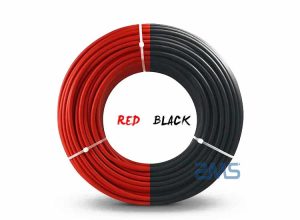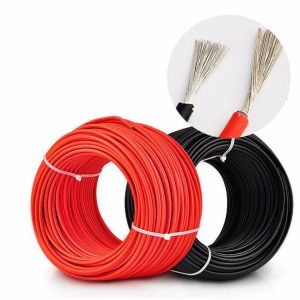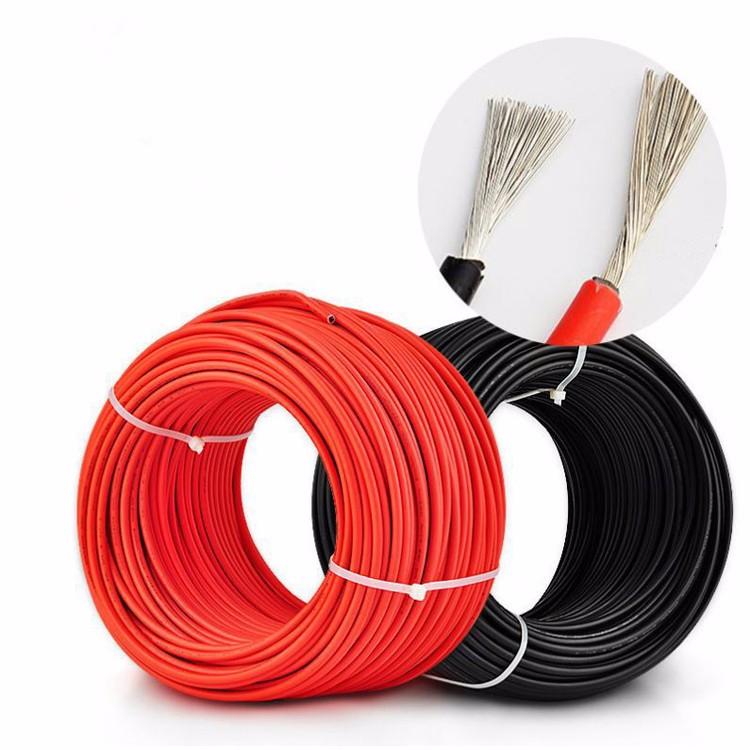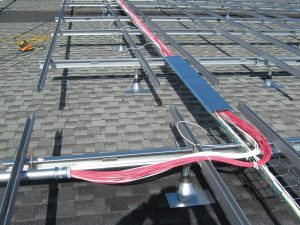Since the birth of the solar photovoltaic (PV) industry, a variety of different PV systems and PV DC cables have appeared on the market.
However, in the face of such a wide range of different PV systems and different components, cable manufacturers have developed a variety of different PV cables to enable the organic integration of these PV components.
One type of cable is called PV DC cable, but at present, there are still many people who do not understand this kind of cable, the following ZMS cable editor will take you to recognize it!

Photovoltaic Cable
Photovoltaic cable is also known as a special cable for photovoltaic, mainly used in photovoltaic power stations.
The cable has the advantages of high-temperature resistance, cold resistance, oil resistance, acid and alkali resistance, UV protection, flame retardant and environmental protection, and long service life.
It can be used in harsher climatic conditions and the common models are PV1-F, H1Z2Z2-K.
Types of Photovoltaic Cables
There are PV DC cables, PV AC cables, and special cables for solar PV.
These are determined by the system and purpose of the PV cable, as well as the environment in which it is used.
PV DC Cables
PV DC cables, also known as DC PV cables, are cables that are used to dry-connect solar PV system panels. A photovoltaic system or solar panel is an electrical power production system that absorbs sunlight and converts light energy into electricity. Electricity is generated at the panel, and wiring is required to transmit the electricity back to the collection point or device.
A PV DC cable is a specific type of cable set up for the PV environment.
In the power transmission industry, power transmission is categorized into alternating current (AC) and direct current (DC).
AC power has more significant electrical losses in the transmission process.
Whereas DC power is circulated directly during the power transmission process. The amount of loss is minimal, and the current is extremely large, faster, and more energy efficient.
Technical parameters of photovoltaic DC cables
In Europe, photovoltaic DC cable is a kind of photovoltaic wire that meets the requirements of tuv certification standards, pv1-f photovoltaic DC cable parameters are as follows.
Conductor size:0.5mm2 to 10mm2.
Conductor material: Tinned copper, copper, copper-clad aluminum, aluminum.
Insulation: Irradiated cross-linked polyethylene insulation + irradiated cross-linked polyethylene sheath.
Voltage: DC 1500 V (max).
Features: Sunlight resistant, high and low temperature resistant, oxidation resistant, acid and alkaline gas resistant, etc.
Temperature rating:-40 °C, 70 °C, 90 °C wet, 105 °C dry, 125 °C.
Laying method: Bridge, exposed laying, outdoor laying, optional direct burial laying.
Structure: Single conductor, double conductor, (can be customized with various cross-sections and number of cores).

In Europe, PV DC cable sizes for photovoltaic panels usually consist of copper conductors in 3mm2, 2.5mm2, and 2mm2 sizes.
Circuit lines are usually sized 2 sq. ft. or larger and contain aluminum conductors.
Rated at 1.5kV, PV line 1kV and 1.5kV construction walk-throughs contain the same insulation thickness.
1.5kV PV DC cables are the standard construction for systems requiring cable ratings above 600V.
Advantages of PV DC cables
- Solar PV systems operate at high temperatures and are exposed to a variety of environmental conditions.
After a long time, people have limited the use of PV DC cables to transmission cables for various PV farms.
These PV DC cables need to meet the sunlight resistance and temperature required by the environment.
- PV DC cables are set for use in PV equipment, while some PV performance types are usually manufactured for underground service entrance applications.
These cable types usually contain irradiated cross-linked insulation and are resistant to sunlight or direct burial.
- Photovoltaic DC cables differ from other cables in terms of insulation thickness, voltage rating, and operating temperature.
PV DC cables contain thicker insulation and are suitable for drying to withstand a variety of harsh environments.
While other cables are rated up to 600 V, PV DC cables are rated at 1500 V for DC cables.
- Other cable types have a maximum cable operating temperature of 90° C, while PV DC cables can withstand much higher temperatures.
- PV DC cables are one of the few single conductor types with a rated voltage of more than 600V that can be used for direct burial without the need for screens.
PV DC Cable Laying and Management
PV modules are often pre-wired with single conductors and quick-connect plugs for easy field installation.
However, managing wire installations can be difficult in harsh or confined environments or where rodents can be a problem.
Installers need to ensure that the wires are secured and fixed in place to minimize abrasion of the outer layer of the cable. And installers typically use wire clips that can secure the PV cable to the module frame.
Another solution used in this area is sunlight-proof ties used to secure PV cables.
Since PV is approved for use in trays where rodents are an issue or where cables can’t be buried directly, wire trays can be attached to the underside of solar arrays above ground.
Local or industry codes may require further support and protection methods.
Conclusion
PV DC cables need to be laid outdoors in harsh environmental conditions and cable materials should be based on resistance to UV light, ozone, drastic temperature changes, and chemical attack.
Prolonged use of ordinary PV cables in such environments can cause the cable sheath to become brittle and even decompose the cable insulation. These conditions will directly damage the cable system, and at the same time will increase the risk of the cable to know the area of the road. In the medium and long term, the possibility of fire or man-made injuries is also kind of high. Greatly affecting the service life of the system.
Therefore, the use of photovoltaic cables and components in photovoltaic power plants is non-tang necessary.
With the continuous development of the photovoltaic industry, the photovoltaic module market silence gradually formed.
Photovoltaic DC power systems by looking at the superior technical parameters can win a variety of use occasions. To create a kind of energy consumption-less power transmission experience.
As well as the tenacity of the performance of the solar power station to narrow the loss.
The solar photovoltaic power generation system provides a constant flow of electricity.
The unique performance of photovoltaic DC cables reduces the complexity of daily maintenance and management. So, photovoltaic DC cable is the domestic and foreign insider of various favorites.

